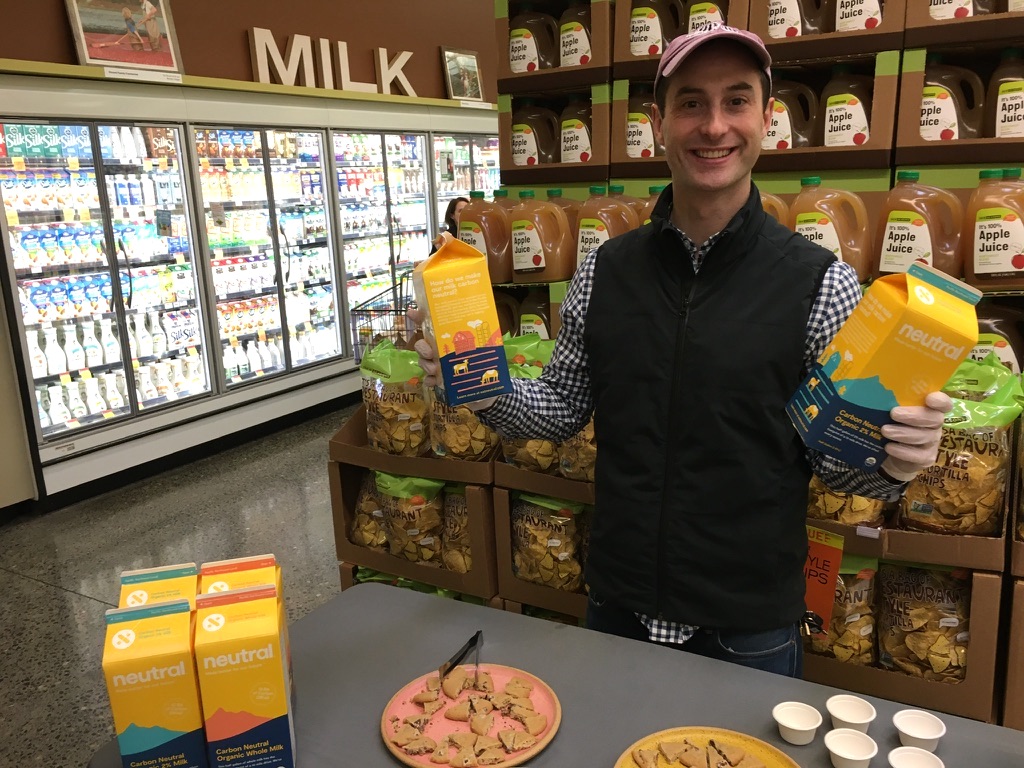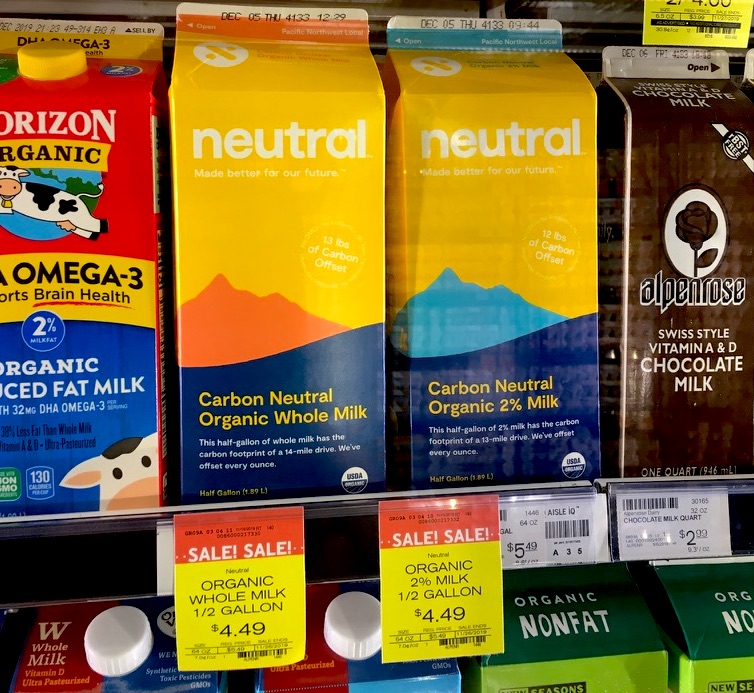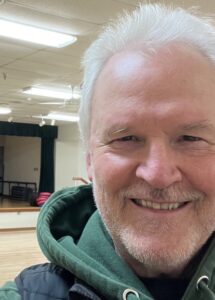
The man in the picture is named Matt Plitch, Neutral founder. His start-up company is devoted to what it means to eat neutral. I met him at a Beaverton New Seasons near me.
There I was in the final lap of Thanksgiving dinner shopping and he stood behind a table of cookies. Hmmm, new cookies? I’m a fan of new cookies.
Except cookies weren’t the highlight. It was the milk, and what goes better with cookies than milk. But not just any milk.

What is carbon neutral organic milk? It’s the first step of eat neutral.
Our half gallon of Organic Whole Milk has a carbon footprint of 13 lbs, equal to the emissions of a 14-mile drive. We’ve offset every ounce. It’s organic and locally sourced here in the Pacific Northwest from pasture-raised, humanely-treated cows. And only the good stuff goes in, which means no GMOs, antibiotics. toxic pesticides, or synthetic hormones. How you choose to pour the good stuff is entirely up to you. And by “you,” we mean your two year old daughter.
Before you start doing the math, I further checked on eatneutral.com for an easier answer. Should a new start-up have answers to questions unasked? The right website has answers.
That footprint is calculated by adding up all the emissions from the farm to your dinner table and beyond. Food’s footprint is huge, and cow products alone make up nearly 10% of global greenhouse gas emissions. So we’re starting here, with dairy.
To make our food carbon neutral, we must first understand each product’s unique footprint. To calculate these footprints, we’ve partnered with one of the world’s pre-eminent carbon scientists, Dr. Greg Thoma, a faculty member at the University of Arkansas and Managing Director of Resilience Services PLLC. Dr. Thoma has dedicated the past 12 years to quantifying the carbon footprint of U.S. dairy, including a groundbreaking study of the emissions associated with consumption of a gallon of milk based on data from 536 American dairy farms. Dr. Thoma leads us in estimating each Neutral product’s footprint.
If this sounds scientific, it is.
Smart folks like science and test the results of research. As a fan of education, I like to hear from those who’ve achieved academic success. Does graduating from a college in Boston sound like a success? Matt in the top image said he graduated from a Boston college.
He was a good sport when I said I graduated from the Harvard of the West, Portland State University. He got a diploma from M.I.T. I asked him if I should stick with Harvard of the West, or switch to the M.I.T. of the West. He said go with M.I.T, so I’ve upgraded my college joke.
What was no joke is his effort to make a difference in climate change, one glass of milk at a time. The driving force in his business is carbon neutral.
Eat neutral allies
Talking with Matt in between customers got me fired up to ask if he knew of Joel Salatin and Polyface Farms.
After a trip to Virginia in 2016, I became a fan; my wife was already there. Mr. Salatin was acknowledged in Michael Pollan’s book, The Omnivore’s Dilemma: A Natural History of Four Meals.
When I searched for ‘food’ on boomerpdx, I found thirty pages of results, and this isn’t a food blog. Or is it?
I was thrilled to see someone taking steps with their life’s work to make a better world. Carbon neutral milk is a good step. Now I’m wondering how to balance my own carbon footprint and what it means to eat neutral.
From google:
7 Instant Ways To Reduce Your Carbon Footprint
- Stop Eating (or Eat Less) Meat. The single most effective action you can take to combat climate change is to stop eating meat. …
- Unplug Your Devices. …
- Drive Less. …
- Don’t Buy “Fast Fashion” …
- Plant a Garden. …
- Eat Local (and Organic) …
- Line-Dry Your Clothes.


